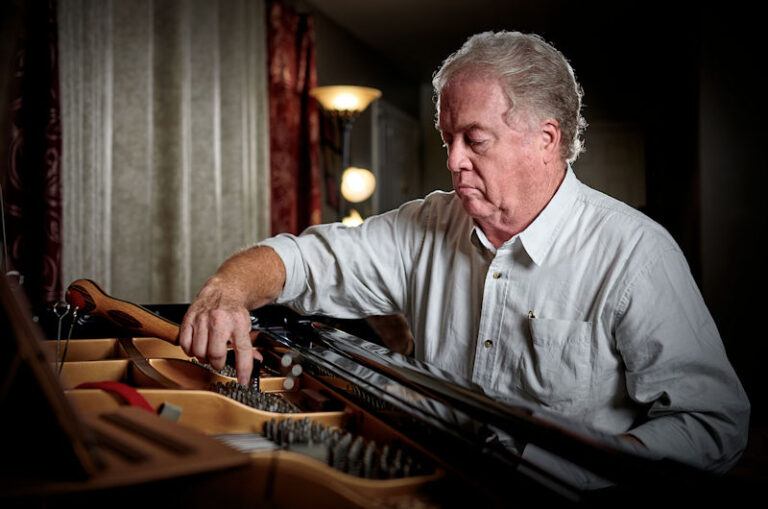
Piano tuning is part art and part science and involves minute adjustments to piano string tensions. This process considers the interaction among notes of the instrument, which is a bit different for each piano, to put the piano “in tune”.
Piano regulation is adjusting the mechanical mechanism (the “action) in each to for the optimal touch response. Over time and with use, the felts inside the piano will compress and the action will not respond as designed. The piano technician has been trained to make a number of minute adjustments to each key and the moving parts to restore the “touch” of the instrument.
Standard concert pitch is referred to as A440, in which A above middle C vibrates at 440 cycles per second. This A is commonly used as the reference pitch from which the rest of the notes can be tuned. Middle C (set to 261.626 Hz) may also be used as a reference pitch.
If a piano has not been tuned for a sustained period of time, it is not uncommon for the instrument to loose it’s overall pitch. In this case the instrument is in need of a “pitch raise” where tension is added to each string to bring the overall tension up to where the piano can be tuned.
Many piano manufacturers recommend that pianos be tuned twice a year. However, a brand new instrument should be tuned more often for the first several years. If the piano is kept in a location where it is not subjected to excessive temperature and humidity changes it will tend to stay in tune better.
Sorry, no records were found. Please adjust your search criteria and try again.
Sorry, unable to load the Maps API.

